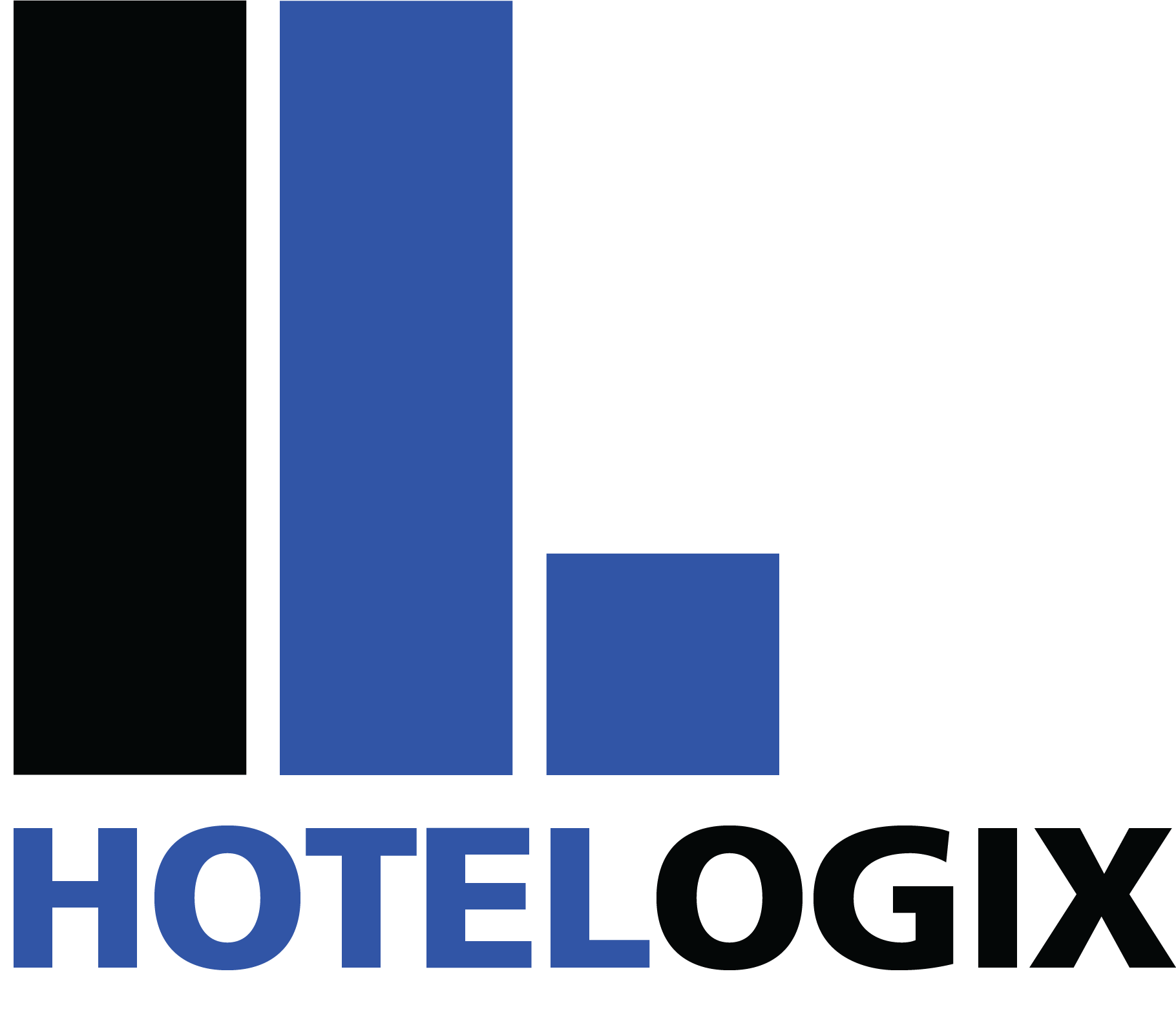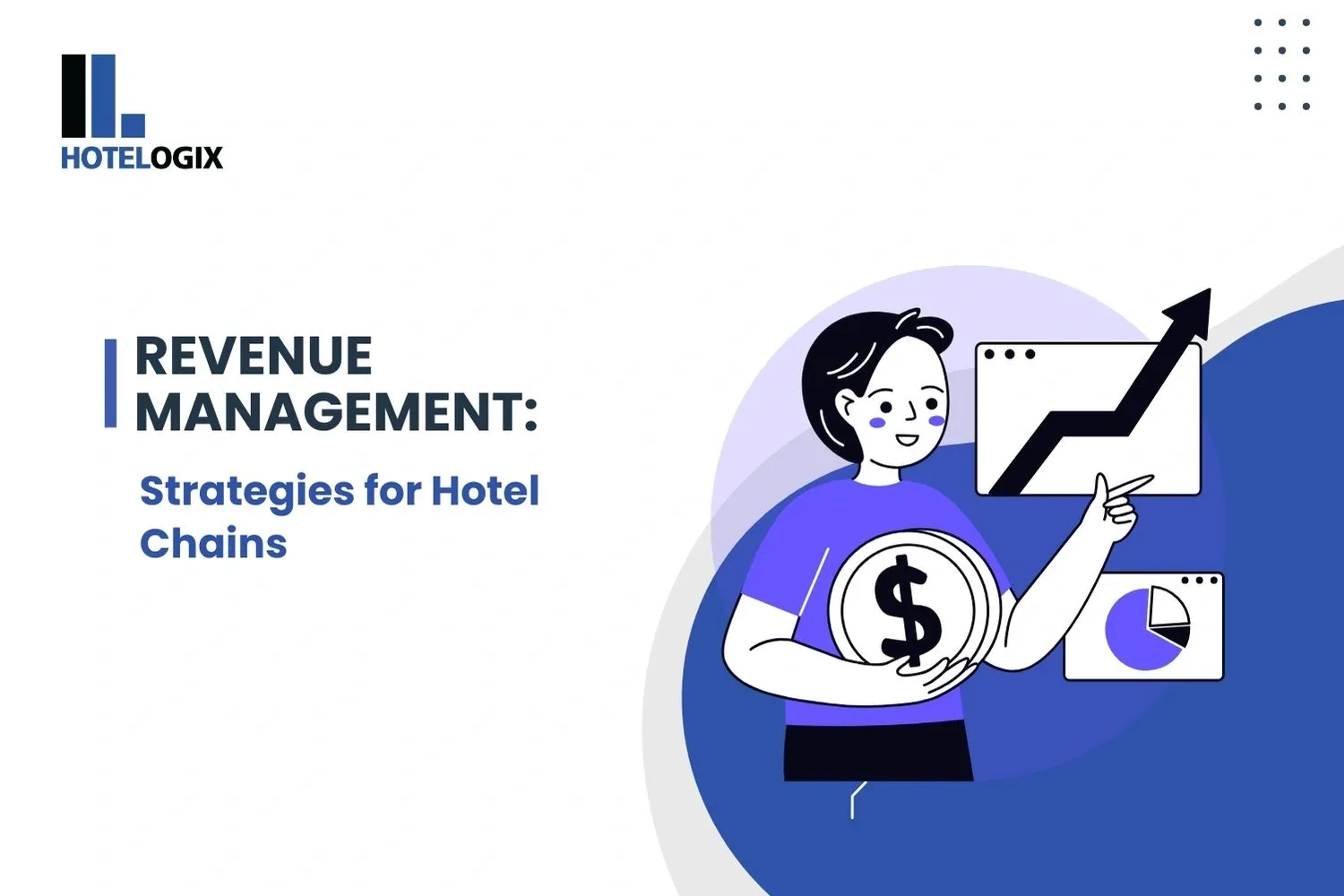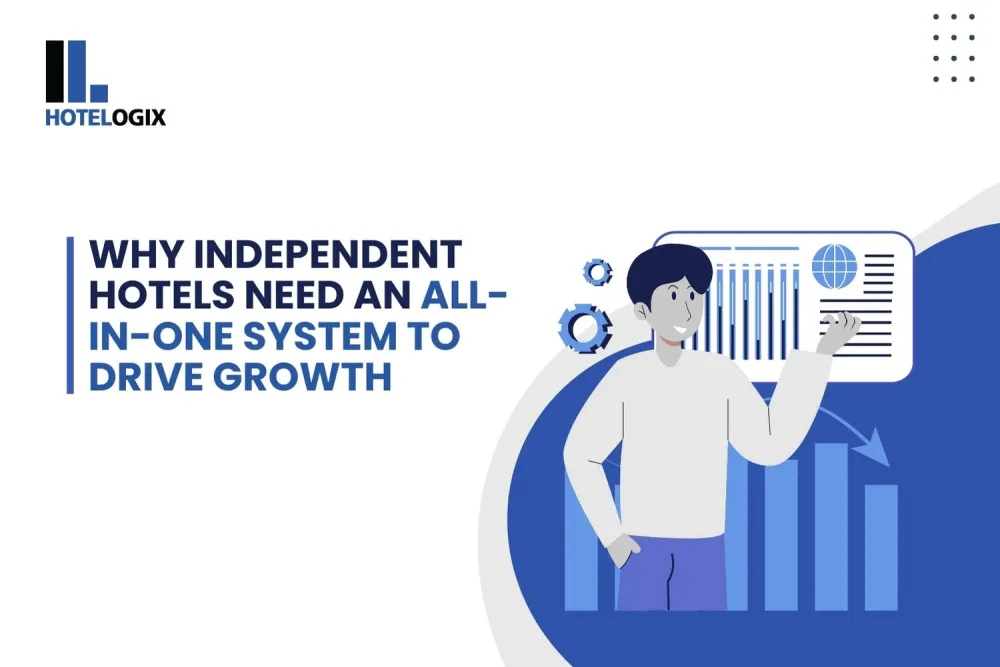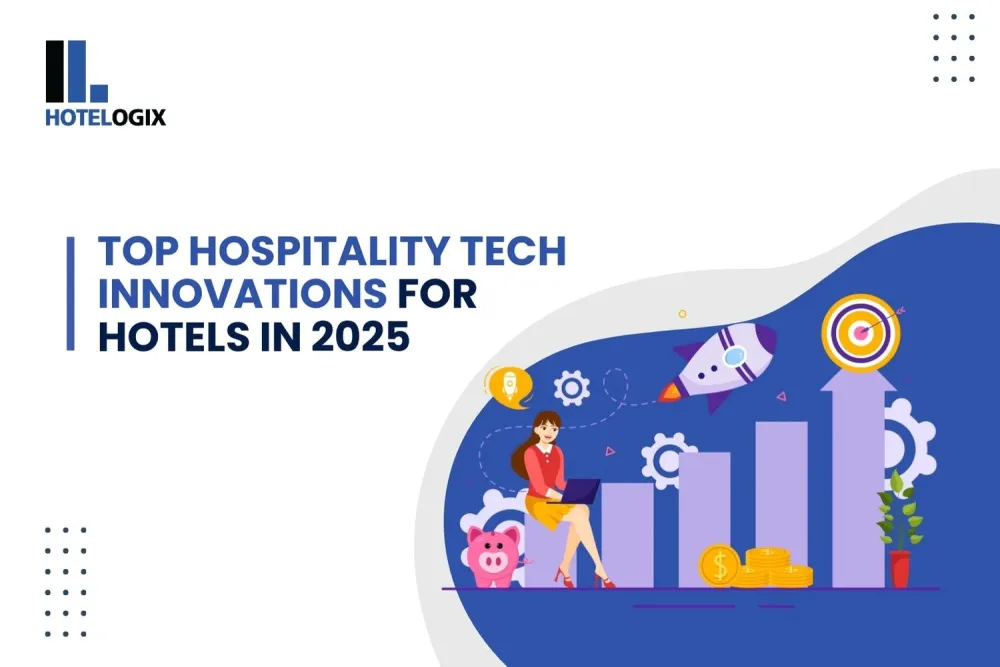Managing a hotel chain means navigating evolving guest behavior, OTA dependence, and fluctuating market demand. For hotel groups, every pricing decision must scale across locations without compromising profitability or control. That’s where a solid revenue management strategy becomes your most important operational pillar.
This guide walks through practical, hotel-specific revenue strategies to optimize occupancy, improve RevPAR, and ensure profitability across all properties.
Why Revenue Management Is Business-Critical for Hotel Groups
Room inventory is perishable—an unsold room tonight is lost revenue. A strong revenue strategy helps hotel groups:
- Sell the right room: Assign the ideal category (suite, deluxe, standard) based on guest intent and booking window.
- At the right rate: Adjust pricing based on real-time demand, seasonal shifts, and market intelligence.
- Through the right channel: Manage a balanced mix of OTAs, direct website bookings, GDS connect, and your central reservation office.
- At the right time: Use pacing reports and forecasts to open or close rates proactively.
- To the right guest: Segment by traveler type and behavior to personalize offers and pricing.
For hotel chains, this needs to happen consistently across all properties, driven by a centralized system.
1. Guest Segmentation: Understand and Target with Precision
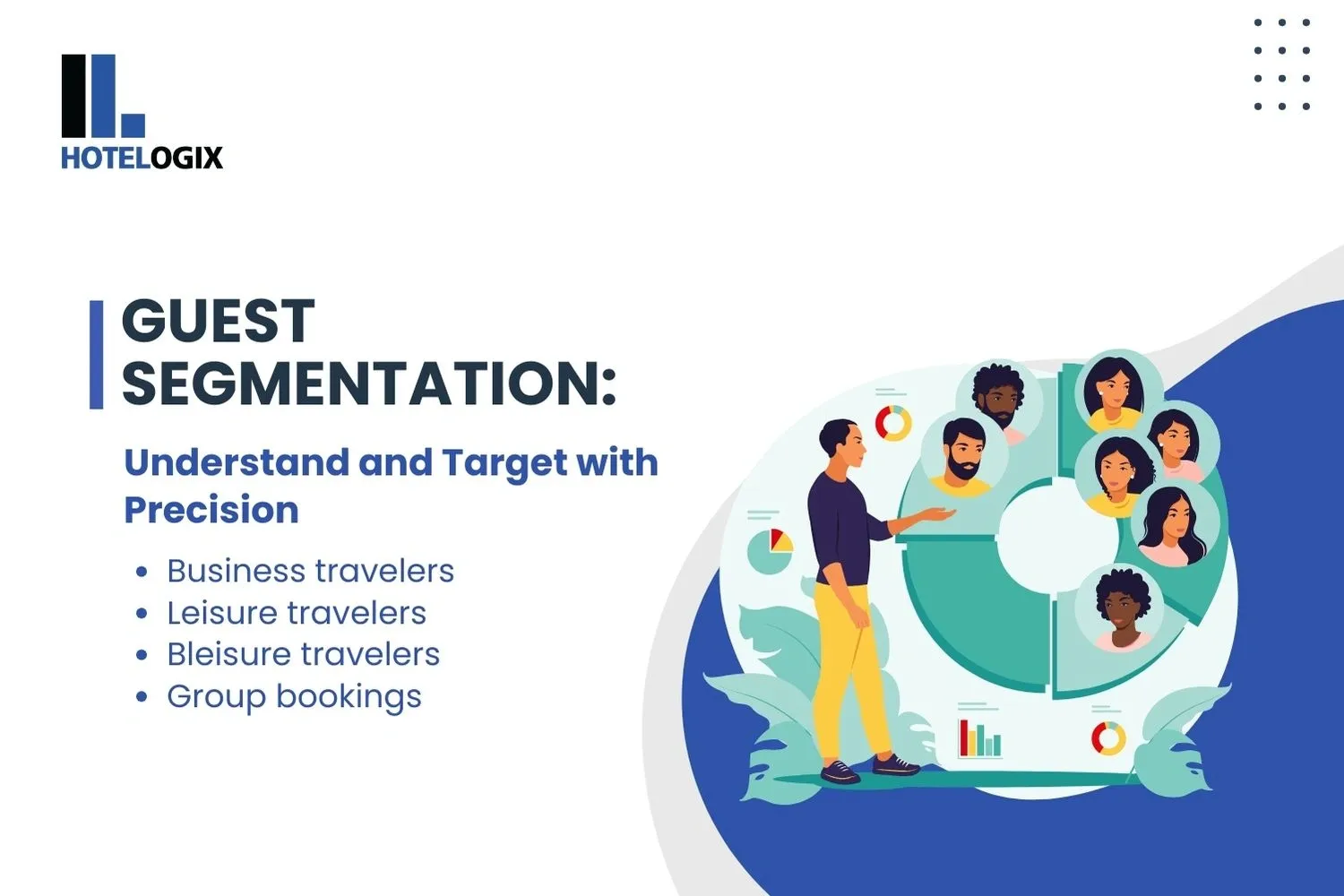
Guest segmentation helps hoteliers categorize guests based on travel intent, booking behavior, and value. This allows more precise pricing and package development.
- Business travelers: Prefer flexibility and book late, often via GDS or direct email.
- Leisure travelers: Price-sensitive, book in advance through OTAs, prefer deals.
- Bleisure travelers: Extend work trips with weekend stays—great for upselling.
- Group bookings: Often routed via your central reservation office, requiring customized rates and allocation.
Segment-level pricing helps reduce dependency on flat rate models and increases conversion across all channels.
2. Dynamic Pricing: Respond to Real-Time Market Trends
Static pricing is no longer effective in today’s dynamic hospitality landscape. Dynamic pricing enables hotels to adjust rates frequently—sometimes hourly—based on real-time data, keeping pricing competitive and revenue optimized.
Key Pricing Triggers:
- Local events or holidays: Demand surges during festivals, concerts, and public holidays justify rate increases.
- Competitor pricing: Track nearby hotel rates; rising competitor prices may signal a chance to increase your own.
- Forward booking pace: Strong early bookings indicate rising demand and the opportunity to raise rates.
- Cancellation patterns: High cancellations may call for lower rates; fewer cancellations support holding or increasing rates.
- Weather, seasonality, demand shifts: Adjust pricing in response to weather changes, school breaks, or seasonal trends.
When to Increase Rates: During peak events, high-demand weekends, or compressed booking windows.
When to Decrease Rates: In shoulder seasons, after large cancellations, or during low midweek demand.
Leverage Technology: AI-powered tools integrated with your PMS can automate these changes, maximizing RevPAR with minimal manual input.
FACT: Despite AI's potential, a 2025 benchmark report found that AI currently ranks lower on hotel investment priorities due to gaps in training, talent, and integration readiness, with many larger chains focusing on system consolidation rather than AI adoption
3. Forecasting Demand: Stay Ahead, Not Behind
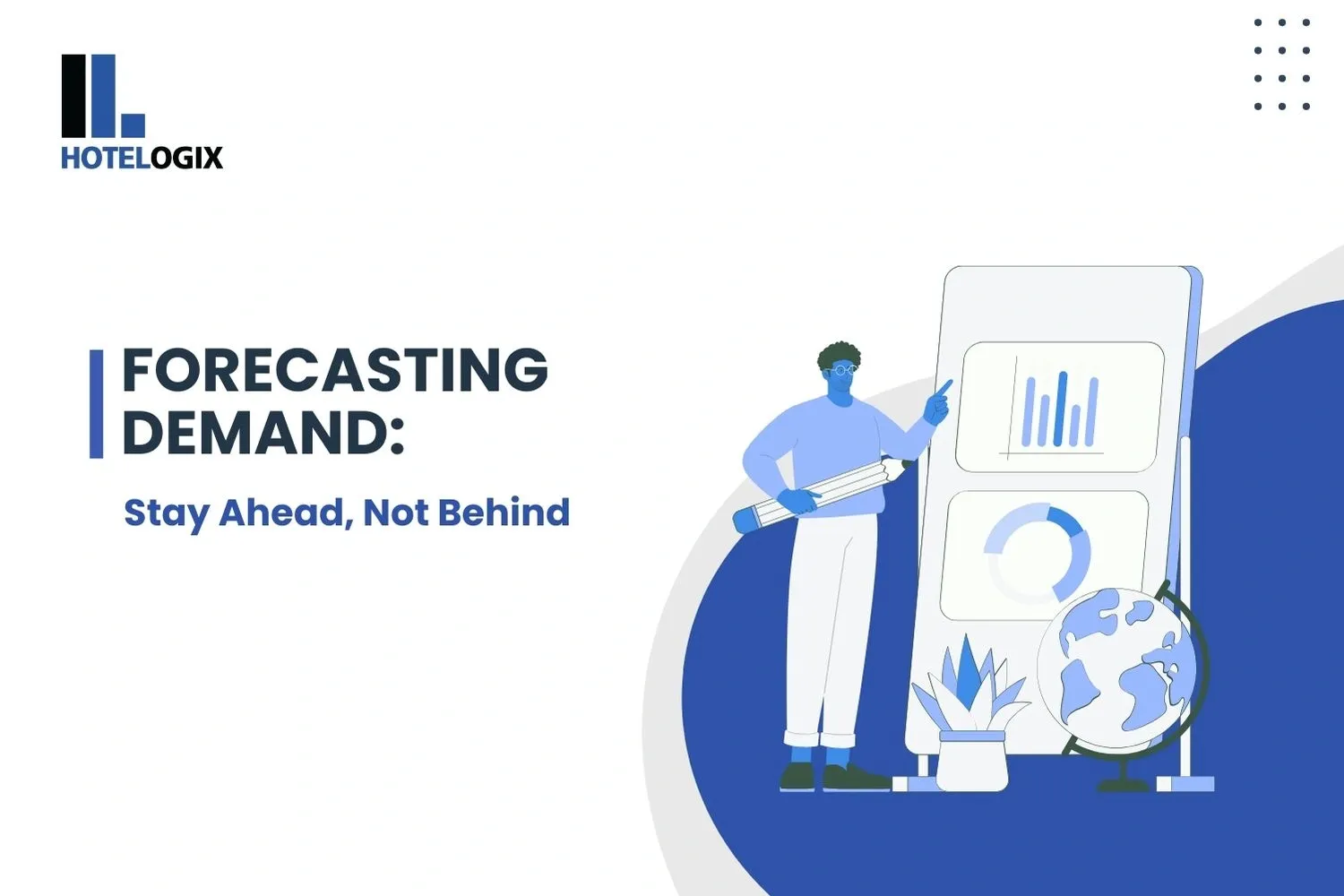
Forecasting involves analyzing both historical trends and live data to predict future occupancy. Look at:
- Previous year’s performance during the same period
- Impact of holidays and public events
- Economic or political developments affecting travel
- Lead time and pickup curves
- No-show and cancellation rates
The more accurate your forecast, the more strategic you can be with pricing, inventory control, and distribution across properties.
FACT: PwC's 2025 Hospitality Directions report projects that U.S. hotel RevPAR will increase by only 0.9% year-over-year to $101.16, with occupancy reaching 63.1% (up 0.1 percentage points) and ADR increasing by 0.8% to $160.30. This represents a more conservative outlook compared to earlier projections, largely due to economic headwinds and soft Q2 performance.
4. Length of Stay (LOS): Improve Occupancy Flow
LOS restrictions help optimize room inventory and reduce low-value one-night bookings. Use:
- Minimum LOS during weekends and high demand days
- Maximum LOS to limit discounted rates during festivals or short-supply periods
Example LOS Strategy:
Apply LOS rules via your PMS or RMS and sync them across your OTAs and booking engine.
5. Room Distribution: Centralized Control Across Channels
Hotel groups that manually manage rate updates across channels risk overbookings and inconsistencies. The solution lies in:
- Integrating your channel manager with your PMS
- Ensuring real-time OTA updates and inventory sync
- Maintaining parity across OTAs, metasearch engines, and your web booking engine
This not only maximizes reach but also protects your reputation management by avoiding pricing errors and booking conflicts.
Product Focus: Centralized Multi-Property Control with Hotelogix
- Push dynamic pricing and LOS rules across all properties instantly
- Track real-time KPIs like RevPAR, ADR, and occupancy by location
- Sync rates with OTAs and direct booking channels via built-in channel manager
- Use a centralized control panel to manage room types, guest segments, and rate plans
“Whether you're adjusting pricing for an event or aligning LOS policies for weekends, Hotelogix helps you do it at scale—with accuracy and speed.
For hotel groups aiming to scale revenue without increasing operational complexity, Hotelogix delivers the backbone of centralized efficiency.
6. Overbooking Strategy: Minimize Revenue Losses
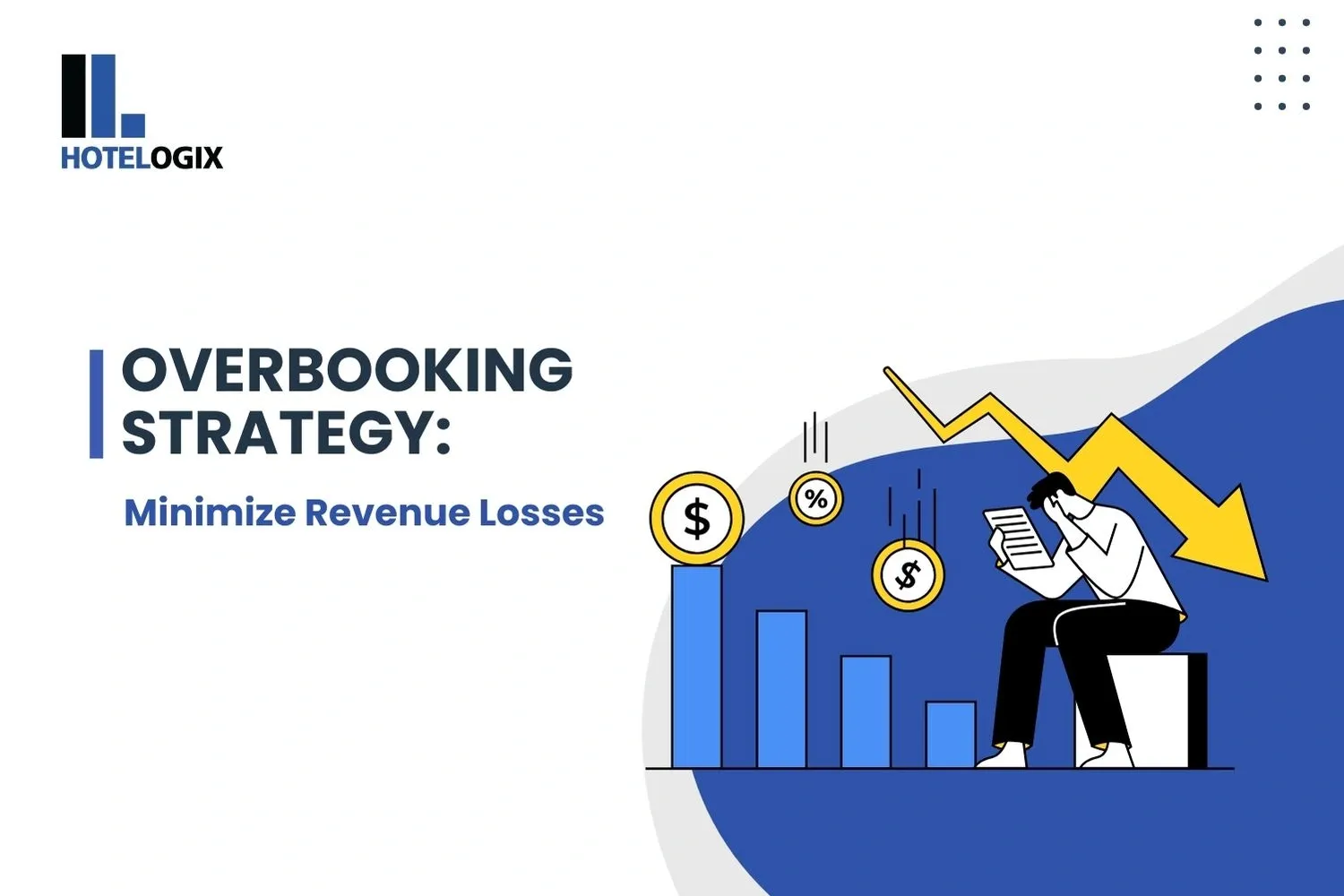
Controlled overbooking is an effective tactic to recover revenue lost due to guest no-shows, late cancellations, and early departures. However, it must be guided by data and historical patterns to avoid guest dissatisfaction.
- No-shows: Offset expected guest absences by slightly overbooking based on historical no-show trends.
- Late cancellations: Compensate for last-minute cancellations using predictive models from past reservation behavior.
- Early departures: Recover room nights lost to early check-outs by anticipating and adjusting bookings accordingly.
Use your Property Management System (PMS) to analyze:
- Historical cancellation rates: Identify average cancellation percentages by season, day, or guest segment.
- Same-day pickup patterns: Track last-minute bookings to understand your property’s ability to fill unexpected vacancies.
- Walk-in likelihood: Evaluate the typical volume and timing of walk-in guests to support overbooking decisions.
- Event impact: Assess how local events influence demand surges and reduce the risk of unoccupied rooms.
Apply overbooking rules selectively—only in periods, room types, or guest segments where data consistently supports the likelihood of full occupancy without risk.
7. Track Key KPIs Daily, Not Monthly
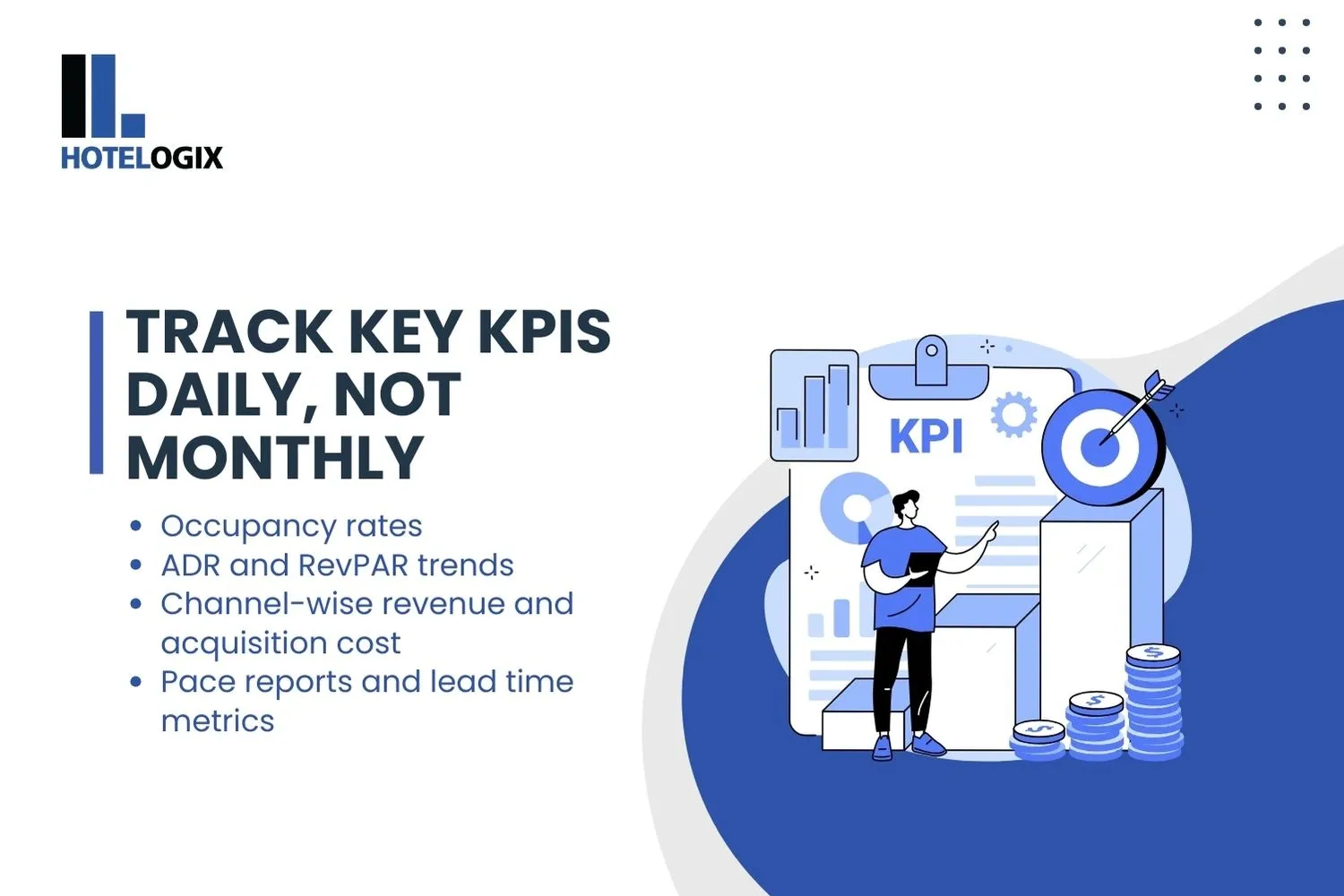
Revenue management isn’t just about pricing—it’s also about visibility. Your multi-property dashboard should give you instant access to:
- Occupancy rates by property
- ADR and RevPAR trends
- Channel-wise revenue and acquisition cost
- Pace reports and lead time metrics
Daily reporting enables fast decision-making and ensures that no property falls behind on targets.
Final Thoughts: Smarter Revenue, Property-Wide
Revenue management for hotel chains isn’t about raising prices—it’s about adapting quickly, maintaining control, and responding to demand across locations.
With the right system, your hotel group can:
1.Automate pricing decisions2.Balance channel contributions3.Improve RevPAR chain-wide4.Centralize reporting and rules5.Simplify OTA and direct rate management
👉 Explore Hotelogix PMS and equip your group with real-time control, AI-powered integrations, and multi-property visibility to drive smarter revenue in 2025.
